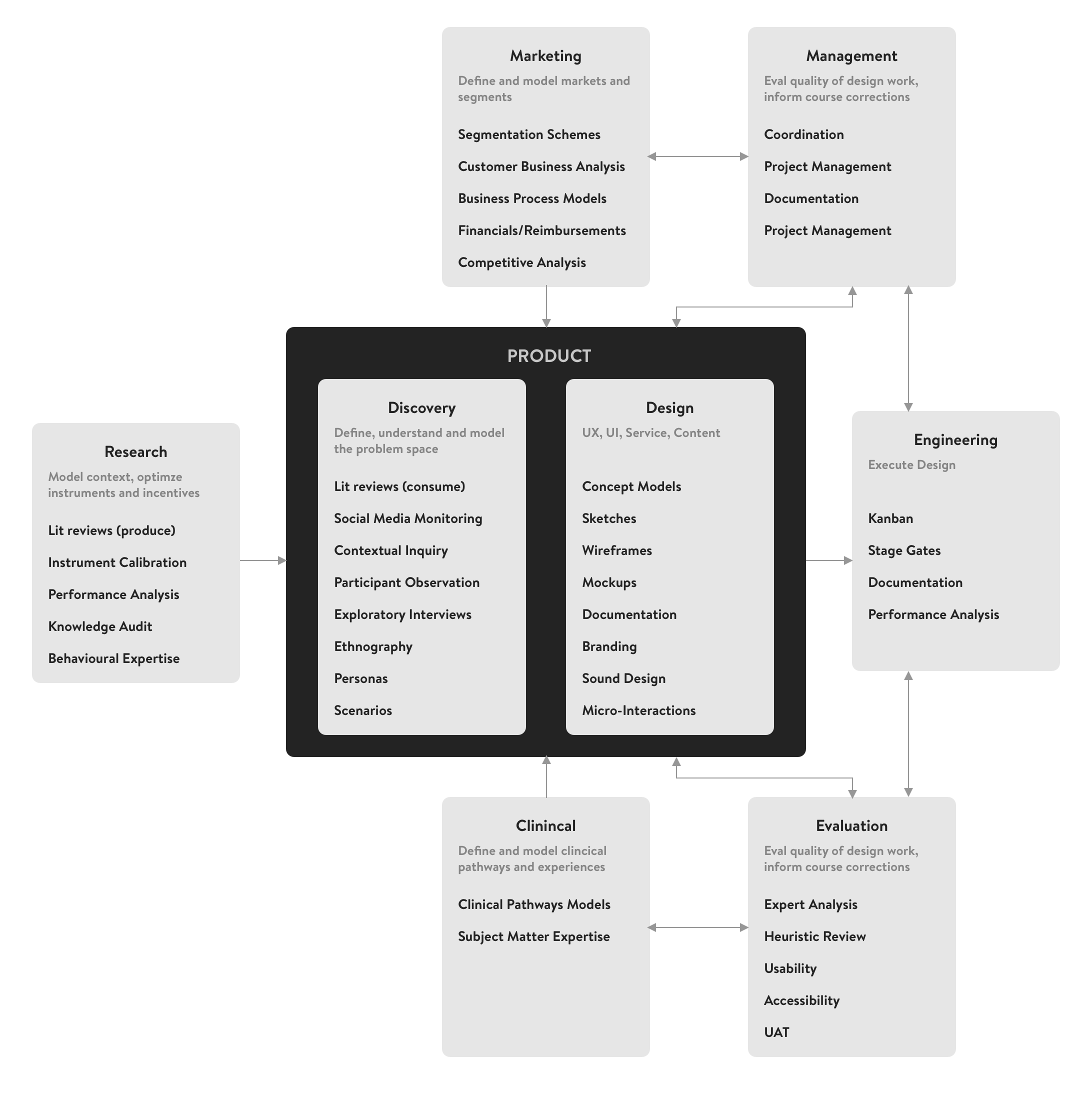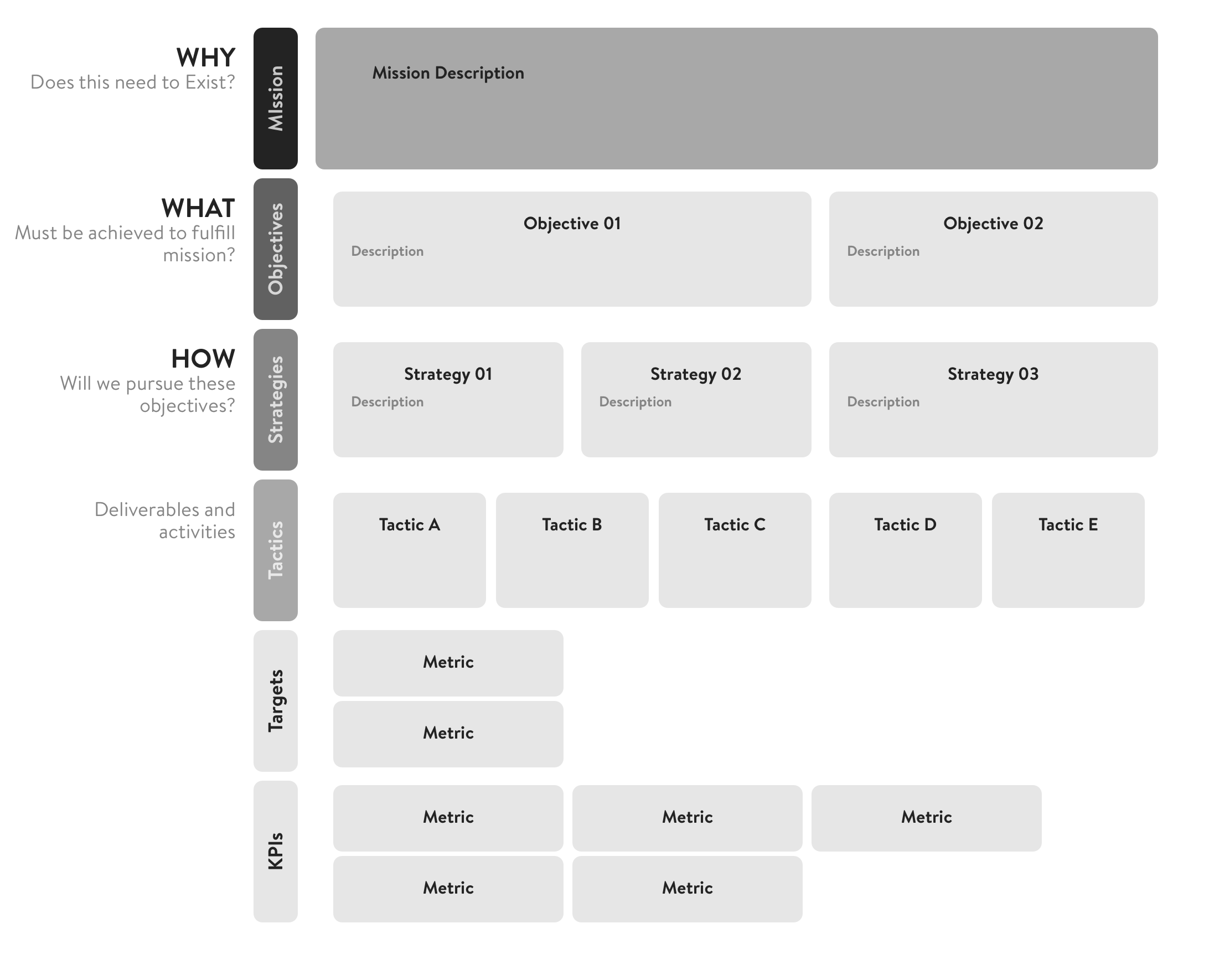iNPD – Integrated New Product Development
Product Development Process
Activities
Product Development Process
Goals
From a practical perspective, design as a discipline and a set of activities, represents just one of many factors that integrate into a larger and more comprehensive product development process. This grid maps disciplines across the 5 stages of new product development: Define, Discover, Design, Develop, Deploy. Some verticals and some project may require a different mix of disciplines. For example, healthcare should include medical.
Prototyping Stack
Role Structure
A general organization to structure the different roles and their interrelationships in the context of new product development. This structure might look different from a product management of HR perspective. This idea here is to maximize performance through individual disciplinary socialization, while coordinating across specializations for whole team performance. Everyone knows what they need to do, and how that fits into a large context. There may be individuals that contribute to multiple specializations, this should be minimized because of deep context switching costs.
In this context, Research is purely focused on creating and acquiring new knowledge for its own sake. Discovery however is applied research, trying to define a problem space for a design solution.
As this was created in a healthcare context, the Clinical role is critical. Outside of healthcare this role may be more broadly interpreted to be SMEs, or subject matter expertise.
Evaluation is another form of applied research. In this case it is applied to design artifacts to ensure they fulfill their promises and that their promises continue to be reasonable.
Marketing, Management and Engineering retain their traditional definitions.
Product Vision Canvas
This canvas helps ensure product design alignment, so that every element can justify its presence in terms of its role in supporting the overall mission.





